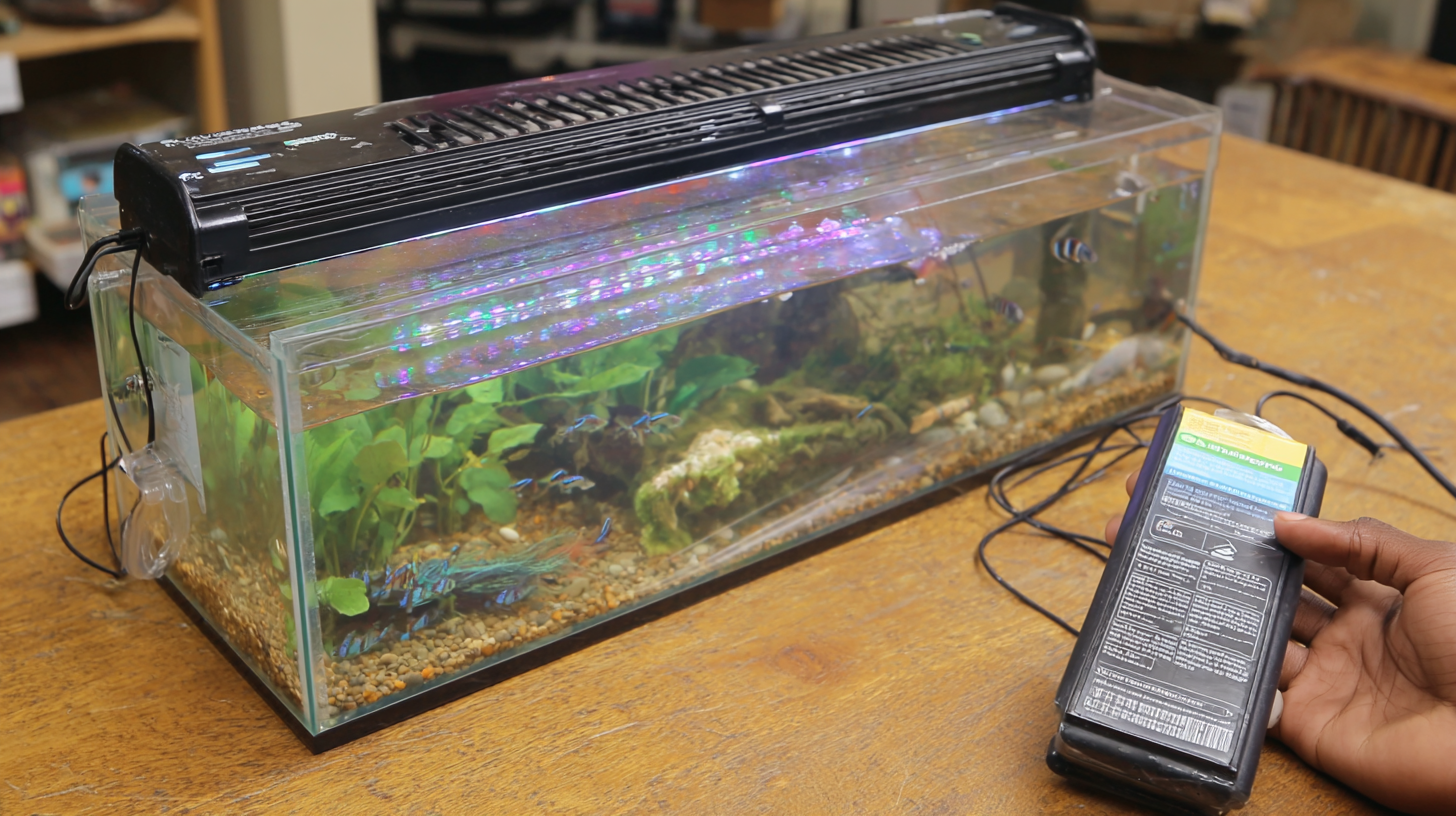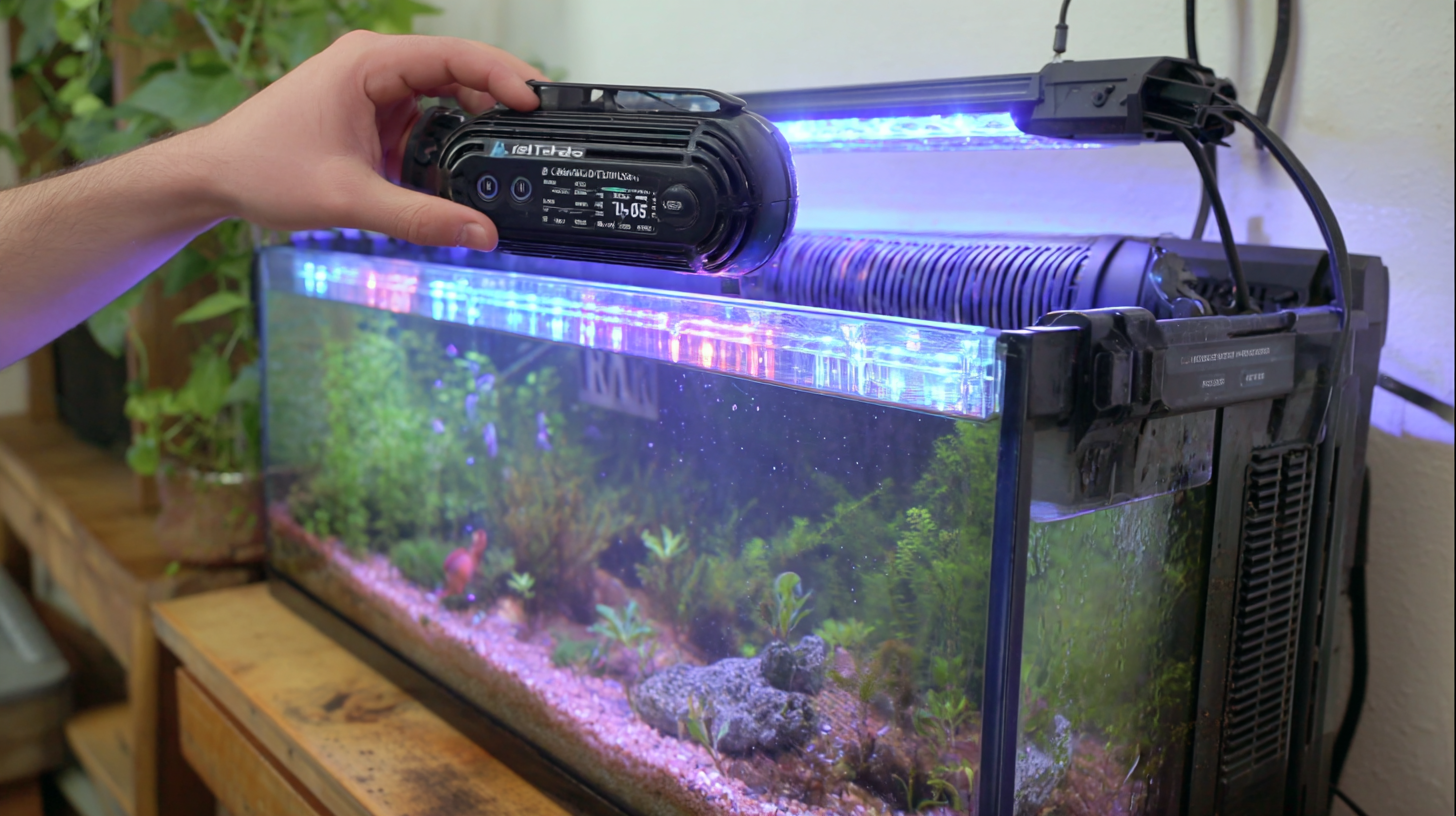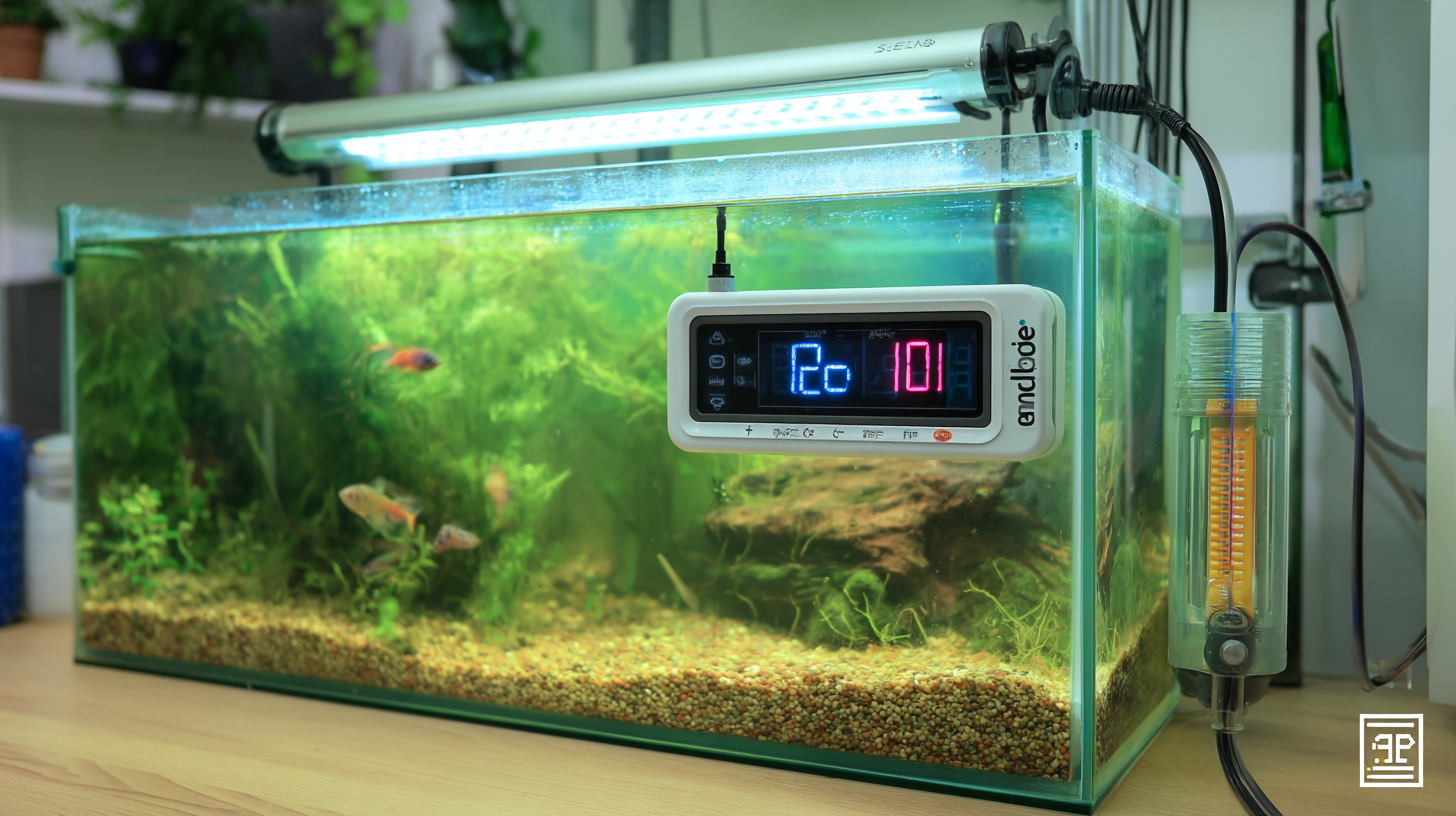How to Choose the Best Aquarium Heater for Your Fish Setup
When setting up a thriving aquatic environment for your fish, one of the most crucial components is selecting the right Aquarium Heater. According to a report by the American Association of Aquatic Professionals, optimal water temperature is vital for fish health, affecting their metabolism, breeding, and immune function. It is noted that 70% of home aquarists experience challenges related to temperature stability, often leading to increased stress and disease among their fish. With a myriad of options available, including submersible and inline heaters, understanding the specific needs of your aquatic species is essential. This guide will explore essential factors in selecting the best Aquarium Heater, ensuring a stable and comfortable habitat for your aquatic friends while promoting long-term wellbeing.

Understanding Different Types of Aquarium Heaters for Your Setup
When it comes to maintaining a vibrant and healthy aquarium, choosing the right heater is crucial. Understanding the different types of aquarium heaters available on the market can make this decision easier. There are primarily three types: Submersible heaters, which are fully submerged in water; Hang-on-back heaters, which are designed to hang outside the tank; and Inline heaters, which are connected to the filtration system. Each type has its distinct advantages, with submersible heaters being the most popular for their efficiency and temperature uniformity.
For instance, in environments where temperature control is paramount, like for Betta fish that thrive in warm water, using a mini heater can help achieve the ideal conditions. Reports indicate that maintaining the proper water temperature can significantly affect fish health and behavior, with fluctuations causing stress or illness. Additionally, regardless of the tank size, integrating a quality filtration system is equally essential, as it works hand-in-hand with the heater to create a stable aquatic environment. A recent guide emphasized that both heater and filtration choices play a pivotal role in fostering a thriving ecosystem for community fish like guppies, ensuring they flourish together.
How to Choose the Best Aquarium Heater for Your Fish Setup
| Heater Type | Heating Method | Suitable Tank Size | Temperature Range (°F) | Price Range (USD) |
|---|---|---|---|---|
| Submersible Heater | Immersed in water | 10 - 50 gallons | 68 - 90 | $20 - $100 |
| Hang-On Heater | Hangs on tank edge | 5 - 30 gallons | 68 - 80 | $15 - $60 |
| Inline Heater | Plumbed into filter system | 20 - 100 gallons | 70 - 92 | $50 - $200 |
| Glass Heater | Traditional design, glass body | 10 - 40 gallons | 68 - 86 | $10 - $50 |
| Titanium Heater | Durable, corrosion resistant | 20 - 150 gallons | 75 - 90 | $40 - $150 |
Key Features to Consider When Selecting an Aquarium Heater
When selecting an aquarium heater, several key features become critical to ensure a safe and healthy environment for your aquatic life. One of the most important factors is the heater's wattage, which should ideally be calculated at 5 watts per gallon of water. For example, a 50-gallon tank would require a heater with a wattage of around 250 watts. According to a report published by the Journal of Aquatic Animal Welfare, temperature stability is crucial for fish well-being, and using the correct wattage helps maintain this stability.
Another essential feature to consider is the type of heater. Submersible heaters are often recommended for their efficiency, while hang-on-back heaters can be more convenient for maintenance. A study by the American Association of Zoos and Aquariums found that submersible heaters provide better temperature control and reduce thermal stratification in larger tanks. It's also important to evaluate safety features, such as automatic shutoff systems, to prevent overheating, which can be detrimental to fish health. The right combination of wattage, type, and safety features will ensure your aquarium heater meets the needs of your fish setup effectively.
How to Determine the Right Wattage for Your Aquarium Size
 When setting up an aquarium, one of the most critical components to consider is the heater, as it plays a vital role in maintaining a stable environment for your fish. The wattage of the heater is essential for ensuring that the water temperature remains consistent based on the size of your aquarium. A general rule of thumb is to use 3 to 5 watts per gallon of water. For example, if you have a 50-gallon tank, you would need a heater that can provide a total wattage between 150 to 250 watts. This calculation helps prevent temperature fluctuations that can stress your fish and disrupt their health.
When setting up an aquarium, one of the most critical components to consider is the heater, as it plays a vital role in maintaining a stable environment for your fish. The wattage of the heater is essential for ensuring that the water temperature remains consistent based on the size of your aquarium. A general rule of thumb is to use 3 to 5 watts per gallon of water. For example, if you have a 50-gallon tank, you would need a heater that can provide a total wattage between 150 to 250 watts. This calculation helps prevent temperature fluctuations that can stress your fish and disrupt their health.
Additionally, the market is witnessing a surge in smart aquarium technologies, which enhance the fish-keeping experience. With the introduction of smart aquariums, monitoring and controlling the water temperature has become even more convenient. These advanced setups often come with integrated heaters and sensors that automatically adjust the temperature as needed, ensuring an optimal environment for your aquatic pets. As the popularity of such systems grows, understanding how to select the appropriate wattage for traditional heaters remains equally relevant, especially for hobbyists looking to create a healthy habitat for their fish.
Safety Mechanisms in Aquarium Heaters: What to Look For
When selecting an aquarium heater, safety mechanisms are crucial in ensuring the well-being of your aquatic pets. Research indicates that up to 70% of aquarium-related accidents stem from equipment failures, making it imperative to choose heaters equipped with reliable safety features. One essential safety mechanism is the automatic shut-off, which prevents overheating by turning off the heater when it reaches a specific temperature. According to a study published by the Aquarium Trade Association, tanks equipped with heaters featuring this technology experienced a 30% reduction in thermal-related incidents.
Another important safety feature is the durable construction of the heater. Heaters made with shatterproof materials significantly reduce the risk of glass breakage, a common cause of tank disasters. A report by the Marine Conservation Society states that 45% of hobbyists encountered issues with traditional glass heaters, leading to costly repairs and even loss of fish. Additionally, heaters with integrated overheat protection and specific programming to prevent low water levels provide extra layers of safety, ensuring that heaters operate effectively without compromising the health of your aquatic environment. Selecting an aquarium heater with these critical safety mechanisms can significantly enhance the stability and safety of your fish setup.
Safety Mechanisms in Aquarium Heaters
This bar chart illustrates the importance of various safety mechanisms in aquarium heaters based on user feedback. The mechanisms evaluated include Overheat Protection, Timer, Automatic Shut-Off, and Temperature Regulation. Each mechanism is represented by the percentage of users who find it essential for their fish setup.
Popular Brands and Their Certifications in the Aquarium Heater Market
When selecting an aquarium heater, it's essential to consider the reliability of the brand and any certifications they hold. Notably, many popular brands in the aquarium heater market adhere to industry standards that ensure safety and efficacy for aquatic life. For instance, heaters that follow UL certification ensure that the product has been rigorously tested for safety, minimizing the risks of overheating or electrical failure. Additionally, products certified by the marine conservation community demonstrate a commitment to sustainable practices, which is becoming increasingly important for environmentally conscious aquarists.

Furthermore, recent industry data highlights the significance of choosing heaters that promote optimal tank conditions. A study by an aquatic veterinary professional noted that maintaining a consistent water temperature is crucial for the health of fish and plants alike. In fact, deviations of just a few degrees can lead to stress and illness among aquatic creatures.
Therefore, when evaluating aquarium heaters, look for models that offer precise temperature control and reliable performance in maintaining ideal environmental conditions. Emphasizing quality not only enhances the well-being of your fish but also contributes to a sustainable aquarium ecosystem.
Copyright © 2021 Payless Pet Products - All Rights Reserved.